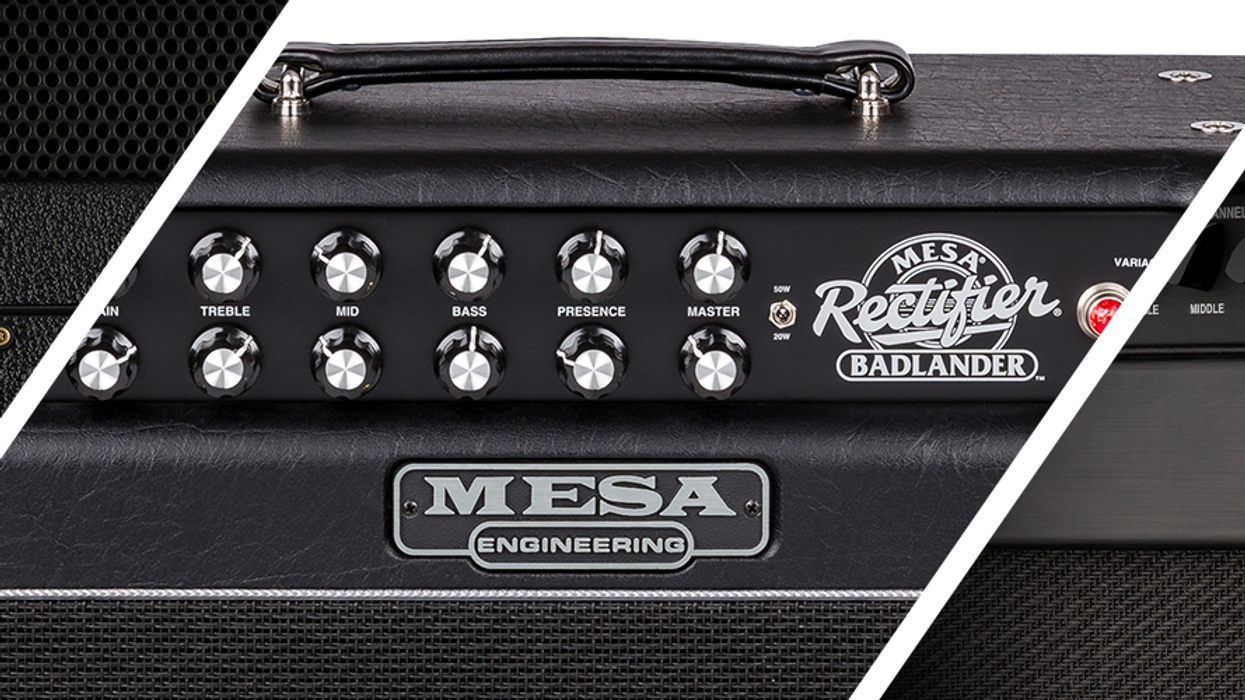RatingsPros:A powerful, versatile, and very-well-conceived delay pedal that spans great sounding traditional analog echoes and stunning weirder fare. Cons: A little noise with some common wall-wart style power adaptors. Street: $339 Jam Pedals Delay Llama Xtreme jampedals.com | Tones: Ease of Use: Build/Design: Value: |
In simpler times, delay pedals lived in a world split by the analog-digital divide. On one side, there was the warm, dark, vintage-y flavor of analog. On the other, the clean, sometimes complex, multi-functional potential of digital. These days, however, digital control blurs the delineations between these worlds, and pedals like the Delay Llama Xtreme, reviewed here, make the most of the reduced barriers between sweet analog tone and digital’s capacity for effect manipulation.
Extrapolating from the delectably rich analog foundation of the original Delay Llama, the Delay Llama Xtreme adds a boatload of functionality—including tap tempo with three subdivisions, and effects including vibrato, tape age, random delay times, and pitch shift (which even delivers a 5-mode sequencer). There’s also an increase in maximum delay capability from 600 ms to 800 ms, user-created presets, a hold-oscillation function, and more.
Triple Trio
The analog heart beating inside the Xtreme’s 5.8" x 4.8" x 1.5" enclosure is made up of three 3205 BBD chips. And the core of the Delay Llama Xtreme’s functions remains the three conventional and familiar knobs the original Delay Llama uses for delay time, repeats, and level. But below these controls lurks a trio of mini-toggle switches. “TRLS” (or “trails”) retains the delay trails when the pedal is switched off and activates buffered bypass. You can switch to true bypass in the lower position, which, of course, also lops off delay trails when the pedal is disengaged. “KD”or “kill dry” mutes the dry signal as it passes through the circuit, delivering processed signal exclusively only at the pedal’s output. The tap-divisions switch creates quarter-note, eighth-note, and dotted-eighth divisions of your tap-tempo selection.
The three non-latching footswitches along the bottom of the pedal serve varied roles. The leftmost is a simple bypass. The center switch enables selection of the presets. It also enables selections from the four extreme modes—vibrato, tape-age, random, and pitch-shift—when used with the “alt” push-button just to the right of the footswitch. The rightmost footswitch is for controlling the tap tempo, but also engages the self-oscillation function when you press and hold.
An abundance of connectivity options further underscores the versatility of the Delay Llama Xtreme. Standard in and out jacks allow mono connection only. But while the lack of stereo output will be limiting to a small percentage of players, the three additional side-panel jacks enable expression pedal control of delay time, remote preset selection, and remote tap tempo, which open up many other expressive possibilities. Internal trimmers, meanwhile, enable alterations to the maximum repeats and the maximum decay of trails.
Repeat Performance
Given the plethora of functions available, it would be near impossible to explore every possibility in a review of this length. (Thankfully, the excellent owner’s manual is thorough and concise.) But by pairing the Delay Llama with a selection of guitars and amps well as a Fractal Axe-FX III, I discovered a genuinely thrilling and inspiring bonanza of sound-sculpting possibilities, not to mention scads of downright tasty traditional echoes for the player who wants to keep it simple.
The pedal’s traditional echo sounds are superb—warm with just a little grit that is a fantastic match for the wobbly “tape age” setting. The added delay time is a striking reminder of how long eight-tenths of a second can feel, too. The repeats knob ushers in self-oscillation pretty fast. You can consider the first half of its range a standard repeats control, but the second 50 percent of its range is primed for exploring the wild textures of oscillating echo. Things really get interesting when you explore the xtreme settings in depth, however.
For my tastes, the xtreme settings are most useful when providing lush enhancement to traditional echoes. This approach is best exemplified by the sounds of the tape-age setting, which adds random pitch fluctuations to the repeats and can be set from subtle to extreme. A touch of vibrato also works beautifully to dress up otherwise traditional delay settings when you want a more predictable touch of wavy atmosphere. The award for most fun, however, might have to go to the random setting, which will rarely be deemed practical for Sun Studios slapback sounds, but should delight sound sculptors that like to build towers of chaotic texture from irregular repeats. The award for “most likely to rob you of hours of hypnotically blissful noodling,” however, goes to the pitch-shift function. It can mimic synthesizer sequencer sounds in many modes. But it can also be dialed in for five distinct, specific pitch-shift intervals including a fifth up//fourth down, a second up/second down, and a ninth up/seventh down. It’s both trippy fun and an extremely creative composition tool.
The Verdict
The Delay Llama Xtreme admirably extends the capabilities of the simpler original Delay Llama. But it’s capable of much more adventurous tones and is bound to impress any fan of delay’s outer limits. Altogether, it’s a bountiful bundle of conventional delay delights as well as a texturalist’s dream come true.
Watch the Review Demo:









![Rig Rundown: Russian Circles’ Mike Sullivan [2025]](https://www.premierguitar.com/media-library/youtube.jpg?id=62303631&width=1245&height=700&quality=70&coordinates=0%2C0%2C0%2C0)

















